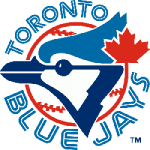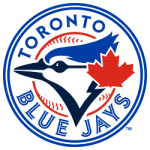The Toronto Blue Jays logo is a staple of the team. It is found on all kinds of merchandise, including caps, jerseys, and apparel.
The logo has endured five distinct rebrands over the years. In this article, we will explore the logo's origins, design, symbolism, and future.
Origins and Design

Toronto Blue Jays Primary Logo 1977 - 1996
In 1976, the American League announced plans to expand to Toronto along with Seattle, and the city of Toronto reconfigured Exhibition Stadium to house a Major League Baseball team. As a result, the Toronto Blue Jays emerged in 1977.
Although the team did not begin their career very well, they gradually improved over the years and became World Series champions in 1993. They became the first team outside the United States to win a championship.
The Jays have become a famous team in Canada, especially in Toronto. They have a solid fan base in both Canada and the United States. However, not many sports magazines or free essay publications have explored how the team has managed to maintain its popularity over the years, despite some ups and downs.
Since 1989, the team has been based at the Rogers Centre, originally known as the SkyDome. Since 2000, they have been owned by Rogers Communications, a Canadian communications company.
Their logo features a combination of blue, red, and white, with the words "Toronto" and "Blue Jays" in solid navy blue. This design lets the players, fans, and the league know that the team is focused on winning the long-term game.
It also means that the team is committed to its home region, history, and unique characteristics because when American sports teams often adopted European or Asian designs, the logo was created with local roots in mind.

Toronto Blue Jays Primary Logo 2012 - 2019
The original Toronto Blue Jays logo was designed by Richard Walker, a designer for the Toronto graphic design firm Savage Sloan. Initially, he developed several design options, and ultimately, this project was chosen.
Richard wanted to create an image that was unique and appealing to the Toronto region. The final design was a logo with a blue jay and a maple leaf. The logo was an immediate success and quickly became the team's leading brand, although it was not without criticism. In 2004, the team logo was updated by Toronto-based designer Brandid. The new design featured a more anthropomorphic blue jay leaning around a huge letter "T", with one arm extending outward to throw a ball. The design succeeded as the logo was a significant part of the team's identity from 2004 to 2011. It's a simple, sleek logo that doesn't attempt to be too flashy, which is ideal for casual fans. Its clean lines and simplicity also allow it to be worn more fashionably. In addition to the new logo, the Toronto Blue Jays have redesigned their uniforms and caps for the upcoming season. The new logos feature a more traditional, clean look and reflect the Toronto Blue Jays' commitment to Canadian roots.
The new logos also use a puff patch, a type of embroidery that gives the image a three-dimensional look. These patches are available in several colors and were created with the assistance of Anne Occi, VP of Design at Major League Baseball.
The Symbolism
The logo was a crucial part of the team's identity, reflecting the club's athletic focus and its connection to baseball. It also reflected a commitment to the region's history and idiosyncrasies, emphasizing a love of Canada's heritage and a deep appreciation for Canadian values.
The Future
As for the future of the Blue Jays logo, it's still unclear. The club recently rebranded, and it looks like the new look is a nod to the team's original style.
The new logo features a stylized blue jay on a white background. The logo is similar to the team's original 1977 logo but slightly different.
For example, the maple leaf to the left of the blue jay's head is much larger this time and looks clearer. Overall, the design reimagines the original Blue Jays logo with additional changes that make it more modern and unique.
While these changes are not as bold as some others, they are still a big step in the right direction for the Blue Jays. With the new design, the Blue Jays return to their roots and reconnect with fans who have fond memories of their glory days.
___
Sports Logo History is a vibrant community of sports logo enthusiasts who share a deep appreciation for the captivating histories behind each team's logo. We take pleasure in exploring the evolution of primary logos, alternate logos, and wordmark logos from renowned leagues such as the NFL, NBA, MLB, MLS, NHL, Premier League, WNBA, CFL, NCAA, UFL, ABA, USFL, AAF, and XFL. Immerse yourself in the intricate details and stories behind these iconic symbols that represent the essence of each team.
In the enthralling realm of sports, the battle of logos among different leagues unfolds as a captivating and ongoing spectacle. Step into the world of Sports Logo History, where we showcase the relentless pursuit of distinction by leagues such as the NFL, NBA, MLB, Premier League, and countless others. Witness the captivating journey as each league strives to create logos that not only capture the essence of their sport but also resonate deeply with fans.
Immerse yourself in the comprehensive sports history provided by Sports Team History, our esteemed partner site, where you can discover the triumphs, challenges, and defining moments that have shaped the legacies of professional sports teams. Stay up to date with the latest sports news through Sports News History, a platform delivering 24/7 coverage of highlights, player interviews, and game analyses. Additionally, express your unwavering support for your favorite teams by exploring Sports Store History, the premier sports team marketplace offering a vast selection of jerseys, memorabilia, and collectibles. Join our community today and celebrate the rich history, iconic logos, and passion of sports.

